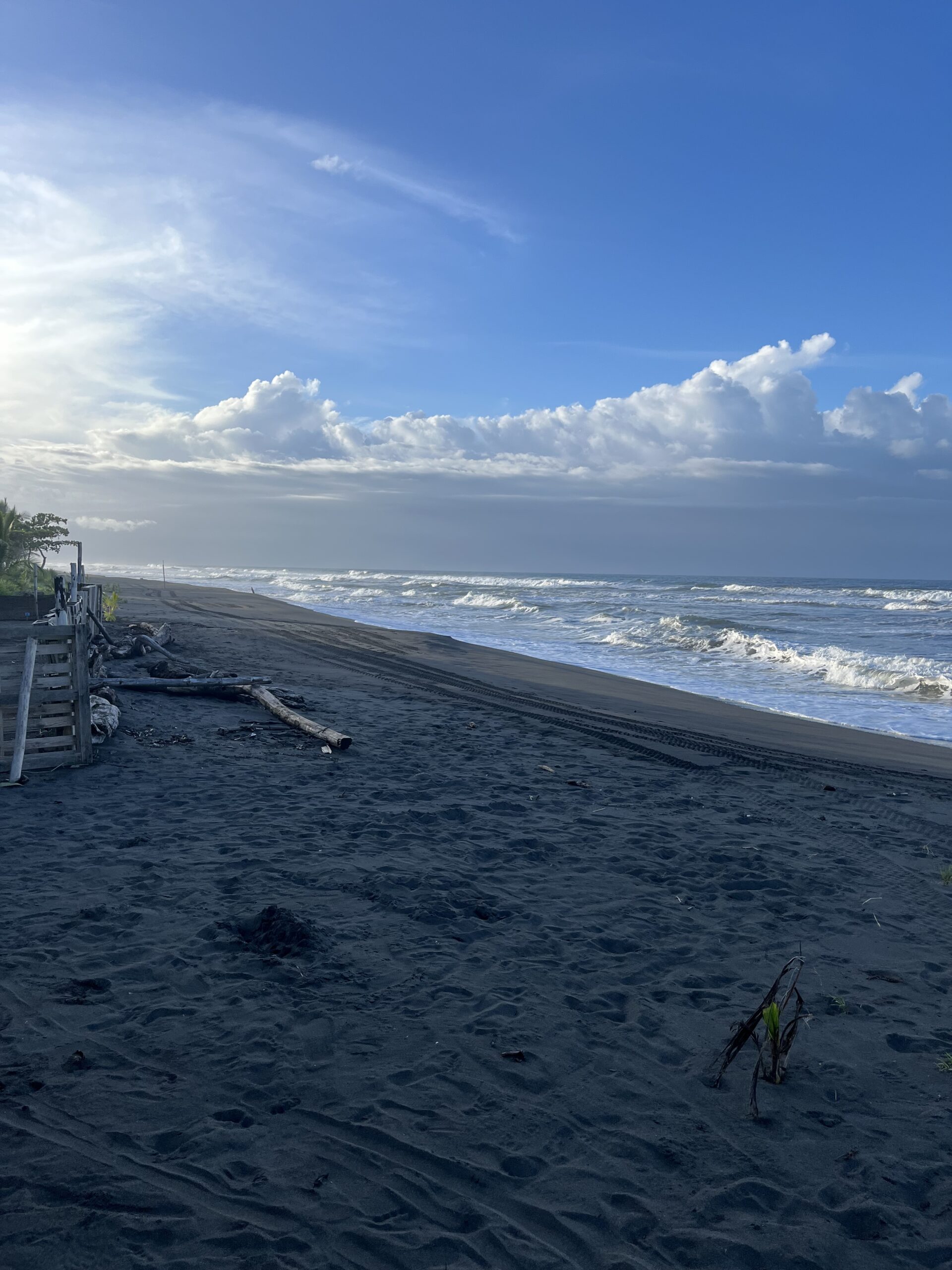During my time in Costa Rica, one of the mandatory events for volunteers was the nighttime beach patrols. The beach patrols, which to some may be the most dreaded part of the volunteer program, were actually where the bulk of the action was. Each patrol lasted roughly four hours, with shifts going from either 8 PM to 12 AM, or 12 AM to 4 PM. We would dress in black clothes, covering up most of our skin to ensure as minimal mosquito bites as possible. Our host mom would then walk us down to the beach where we would meet up with our guides. Each Patrol would consist of 2 or more volunteers and a guide, each equipped with a flashlight covered in translucent red paper, and water. The almost pitch-black patrols would then begin! We would begin walking on the beaches occasionally shining our lights to look around for any turtle mark on the sand. It is common to trip on logs and uneven piles of sand. It is so pitch black during this time, that you are unable to look inches in front of you, but it is the best view of the starry night sky I have seen to this day. On that note, it was equally as hard to see an incoming wave, and chances of being drenched were extremely high as well! This task could take hours, and plenty of patrols ended with not seeing any turtles at all! The first few patrols are quite tiring and they do take a while to get used to, but they are all worth it in the end! But, if you were lucky enough to encounter a turtle there was plenty of work to do. Guides may stop everyone in a while when they notice a marking on the beach and look around to investigate what it is about it, and that is when we encounter the turtles! When finding the Sea Turtle they would most likely be in the process of laying their eggs, which worked out best for the volunteers, as sea turtles enter a trance-like stage when they eat laying their eggs. Sea turtles like to throw plenty of sand around, so nesting turtles are quite easy to spot, a side of the size and sounds they make. At this time volunteers would carefully bend down to collect the eggs and place them in a small bag, being careful not to disturb the mother sea turtle while she is laying her eggs. This process is extremal rewarding and was one of the coolest parts of the whole program since you were able to get so close up to the turtles! Once the turtle was complete with her work, she would brush ore sand around and head back into the ocean, and volunteers would head back to the nursery, which was at the beginning of the patrol. The nursery, which was fenced and guarded 24 hours a day by the local townspeople, consisted of a grid of about 2-foot-deep holes in the sand of a small section of the beach. Each bag of eggs would occupy one hole, and the eggs would carefully be placed, where they would rest until the curious little sea turtles were ready to hatch and come up from the sand!
Related Posts
Girl Scout Hosts Workshops on Sea Turtle Conservation
Almost all species of sea turtles are endangered with three of the seven existing species being critically endangered. It is…
Egg Exhumation
Occasionally, the eggs from the nursery would not hatch, and it was up to the volunteers and guides to find…

Costa Rica with IVHQ!
This past summer me (16) and my older sister (20) experienced our first trip abroad on our own on a…
